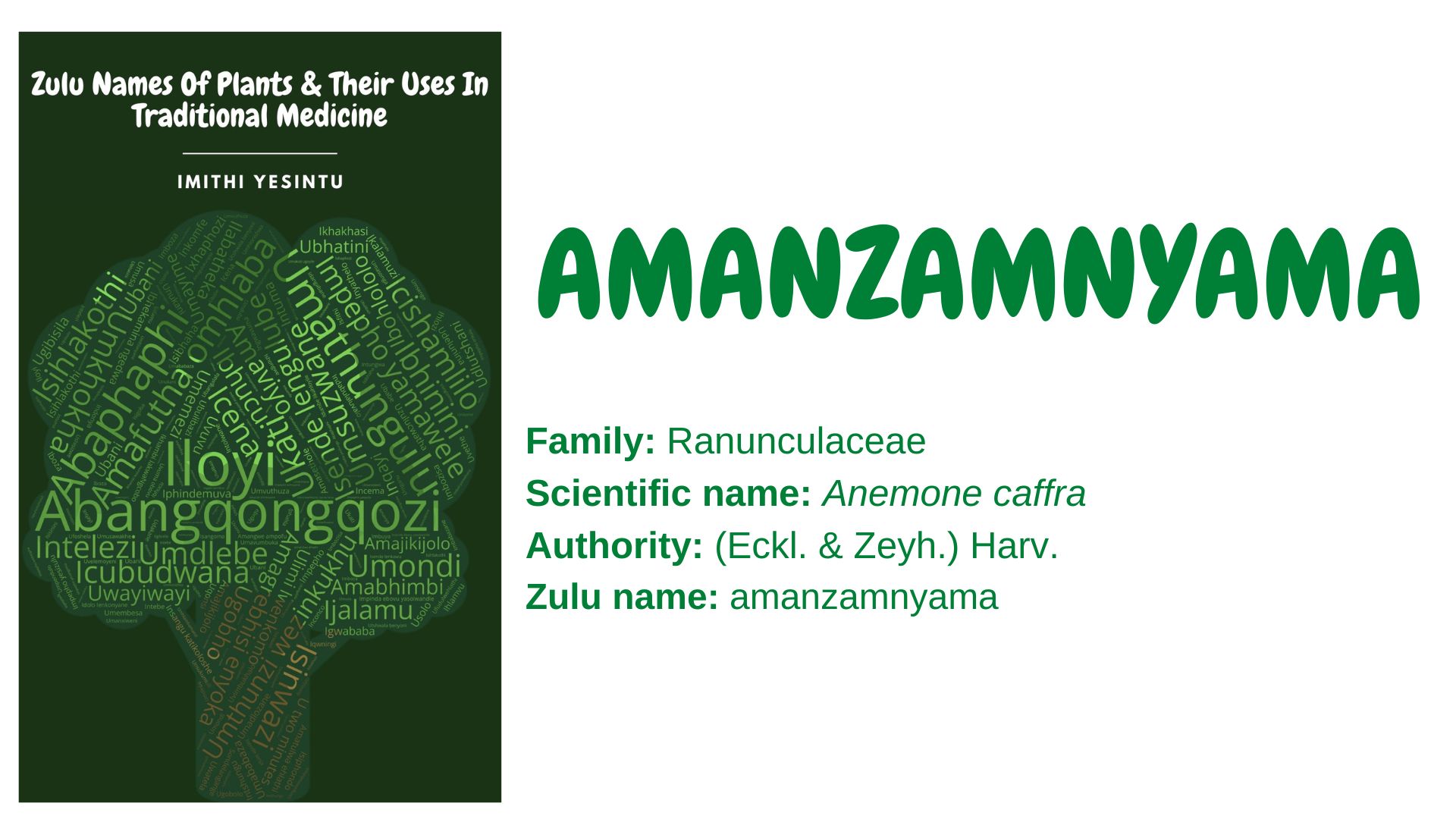Family: Ranunculaceae
Scientific name: Anemone caffra
Authority: (Eckl. & Zeyh.) Harv.
Synonym: Knowltonia caffra (Eckl. & Zeyh.) Christenh. & Byng ex Mosyakin & de Lange
Zulu names: amanzamnyama, umanzamnyama
Other names: anemone, windflower (English) aaemoon, syblom, sybloom (Afrikaans)
Plant description: A. caffra is a perennial herb. It has rosette lobed leaves, white or pale pink flowers, and an acrid sap that causes blisters on the human skin. The plant is distributed throughout the mountains of Eastern Cape preferring to grow in cooler and grassy slopes.
A. caffra is often confused with A. fanninii. The name amanzamnyama means black or dark waters.
Uses:
- The roots are ground to fine powder and taken as snuff to treat a headache.
- The roots are also burnt and the smoke inhaled to treat headaches and colds.
- The roots are used to treat toothache.
- The plant is mixed with Athrixia heterophylla to treat hysteria.
- The plant is used to make an emetic to treat bilious attacks.
- The plant is used as enema to treat bilious attacks.
- The roots are used to encourage breast development in young women.
- The roots are used as a love charm and to make a love potion.
Safety precaution:
Using traditional medicine responsibly can enhance your overall health and well-being. Misuse and abuse can lead to complications. You can inquire about the correct use of traditional medicine from a knowledgeable herbalist and practitioner. You can also visit imithiyesintu.co.za or email: info@imithiyesintu.co.za to learn more about traditional medicine
References and further reading:
- Batten, A. 1986. Flowers of southern Africa. Frandsden, Fourways.
- Hutchings, A. 1996. Zulu medicinal plants: an inventory. University of Natal Press, Pietermaritzburg.
- Manning, J.C. and Goldblatt, P., 2013. A taxonomic review of the dry-fruited species of Anemone (Ranunculaceae) in southern Africa. Bothalia, 43(1), pp.1-14.
- Pooley, E. 1998. A Field Guide to the Wild Flowers of KwaZulu-Natal and the Eastern Region. Natal Flora Publications Trust, Durban.
- Watt, J.M., and Breyer-Brandwijk, M.G., 1962. Medicinal and poisonous plants of southern and eastern Africa, second edition. Livingstone, London.
You Can Order Your Copy Of The Book By Emailing: info@imithiyesintu.co.za
Feel Free To Add Other Uses Of This Plant In The Comment Section Below:

